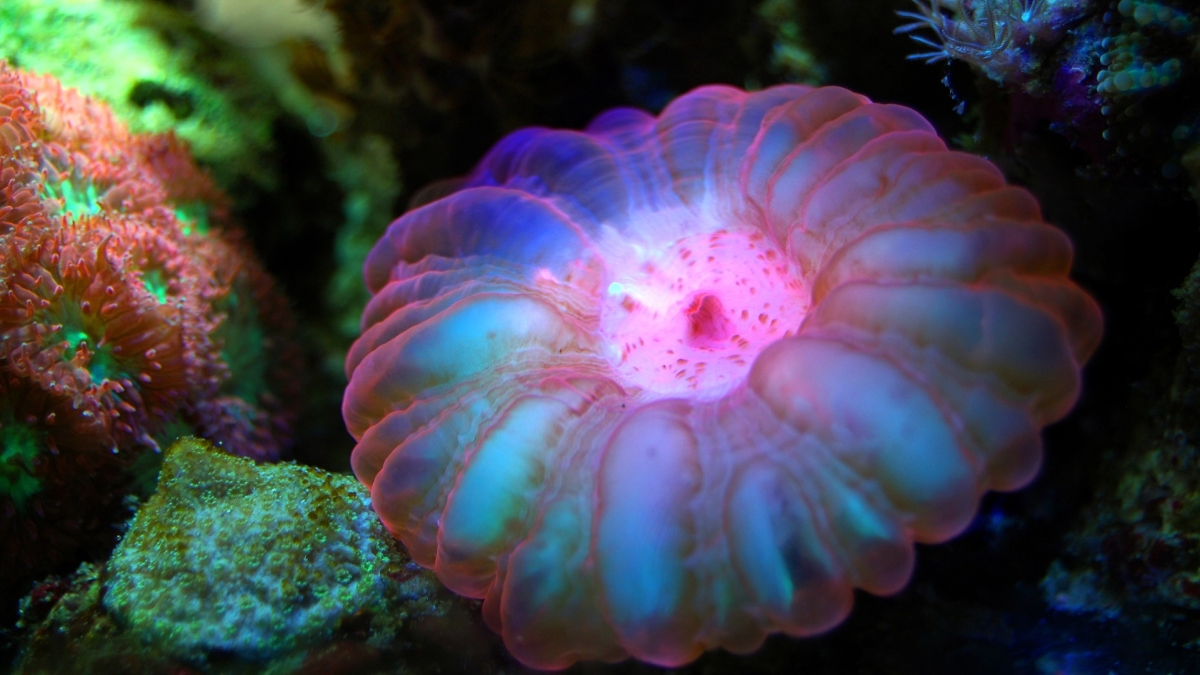For the first time since negotiations began more than 15 years ago, more than 100 countries have agreed on a United Nations treaty to protect the world’s oceans.
The landmark deal aims to conserve marine life and biodiversity in the “high seas” — international waters beyond individual national jurisdiction — which make up nearly half of the world’s surface, yet are largely unprotected.
The high seas are the largest habitat for life on Earth and the new deal proposed by the United Nations is seen as crucial to bringing 30% of the world’s land and sea under protection by 2030.
But what will protections under this proposed treaty look like in practice? What would enforcement look like? And what role do universities, ocean education and research fit into this equation?
ASU News spoke to John “Jack” Kittinger, an expert on marine conservation who serves as both a research professor in ASU’s new School of Ocean Futures and vice president of the Global Fisheries and Aquaculture program in Conservation International's Center for Oceans, about the new treaty, its potential impact and the pathway to implementation.
Jack Kittinger
Question: For those not familiar, what makes this treaty so unique and why does it matter?
Answer: This is certainly a landmark deal. The reason it's important is because it covers an area of the world called the “high seas,” which are areas beyond the national jurisdictions of countries (that) cover more than 40% of the planet. This treaty creates a governance system for the high seas and for new marine-protected areas to be established. It's a big deal.
Q: A general question: Why is protecting the high seas important?
A: The high seas contain an incredible amount of biodiversity. It's the most abundant habitat on Earth. If you look at our planet, it's pretty blue, right? Most of that blue is in these areas. There's some incredible ecosystems, species and features in that zone, and a lot of those features, those species, those habitats and those ecosystems need protection.
Q: How have the world’s high seas been governed in the past?
A: That whole area has been governed very weakly under the United Nations Law of the Sea. There are some specific legal instruments that the world has agreed to with respect to that zone, including the International Seabed Authority, which also sits under the United Nations, and Regional Fisheries Management Organizations, which are tasked with managing large fisheries in each of the ocean basins. But even with those existing instruments and organizations, there's been a big gap in the management of the high seas with respect to marine-protected areas.
Right now, the United States can establish a protected area within their sovereign waters. And any maritime country can do the same. But once you get outside a country's jurisdiction and you're in the high seas, there's really no mechanism to protect those areas until this treaty. That's been a big gap.
Q: What would this look like in practice?
A: I think that is one of the bigger issues that really will attract a lot of attention: What will this look like in practice? And who will follow it? International treaties like this are not like domestic law. A good example of that is whaling. The overwhelming mass majority of countries on Earth agreed to stop whaling, but some countries have not agreed to that — Norway, Japan, Iceland — and they continue to do it despite the fact that every other country other than those three have ceased and desisted all whaling and they're all part of the International Whaling Commission. Countries can dissent from the process, and that's for any international treaty, not just ocean ones or conservation-focused ones. It’s going to be very interesting to see.
Q: As a research professor and with your role working with Conservation International, how do you see universities, ocean education and research fitting into this equation?
A: We formed a partnership based on two mutual but differentiated strengths. At the conservation nonprofit, Conservation International, we have a presence in over 35 countries with practitioners on the ground working with governments, with communities and with the private sector to advance conservation initiatives and address the twin crisis: the biodiversity crisis and the climate crisis. ASU, on the other hand, has this unbelievable bank of researchers, innovators, technologists and educators.
That's a great marriage because we need the scientific and technical capacity of the university at Conservation International to advance work and to make a meaningful impact. ASU in turn benefits from being able to work on the ground in these communities and places where we have all these team members. The new School for Ocean Futures allows us to leverage that sort of relationship in oceans.
Q: It sounds like ocean conservation and governance in the high seas has historically been very hard to get consensus on. What do you think attributes to this landmark moment now?
A: I once had a law professor in graduate school who taught international ocean law, John Van Dyke at the University of Hawaii. In the late '70s and early '80s, he was at the United Nations Law of the Sea negotiations where it was passed and ultimately ratified and adopted.
One of the key defining moments of that process was when this little-known diplomat Avid Pardo from the tiny country of Malta in the Mediterranean Sea got up and made this passionate plea that we should pass the Law of the Sea. His famous line was that the sea's resources were a “common heritage of mankind.” That's the backbone of the United Nations Law of the Sea.
I think a lot of the negotiators that passed this treaty invoked the spirit of Avid Paro in seeking to establish this new mechanism to protect and conserve that common heritage of mankind. That to me is what's so amazing about what those negotiators were able to achieve in New York.
Q: Now that this treaty has been finalized, what's next?
A: The next step is to get the treaty ratified by a critical and massive country. One of the main points (of discussion) for this was around the equitable sharing of access and benefits of marine genetic resources, including some of which we can't even predict, like medicines or technologies. The negotiators wanted to create an equitable framework for the sharing of benefits from marine genetic diversity that originates from the high seas. There’s a lot of interest in getting a lot of signatories to the treaty quickly.
Q: Given the challenges overcome to get to this point, this treaty and the continued road ahead, what makes you optimistic about a healthy ocean future?
A: I think about the Arvid Pardo element. I think about how these international negotiations can seem to take forever and it's going to take time for this treaty to start to get used in the way that people imagine it will be transformative. But now that we have this in place, we have to accelerate because the climate crisis and the biodiversity crises are accelerating.
Now that this is done, it is incumbent upon us as a community to put this to work and to do it fast and to do it quickly, equitably and effectively. That is the real challenge that we have right now, but there's a real opportunity around that as well. The global ocean could look very different in a decade's time because of this, but only if we put this treaty to work.
Top image courtesy Pixaby
More Environment and sustainability

2 ASU faculty elected as AAAS Fellows
Two outstanding Arizona State University faculty spanning the physical sciences, psychological sciences and science policy have been named Fellows of the American Association for the Advancement of…

Homes for songbirds: Protecting Lucy’s warblers in the urban desert
Each spring, tiny Lucy’s warblers, with their soft gray plumage and rusty crown, return to the Arizona desert, flitting through the mesquite branches in search of safe places to nest.But as urban…

Public education project brings new water recycling process to life
A new virtual reality project developed by an interdisciplinary team at Arizona State University has earned the 2025 WateReuse Award for Excellence in Outreach and Education. The national …



